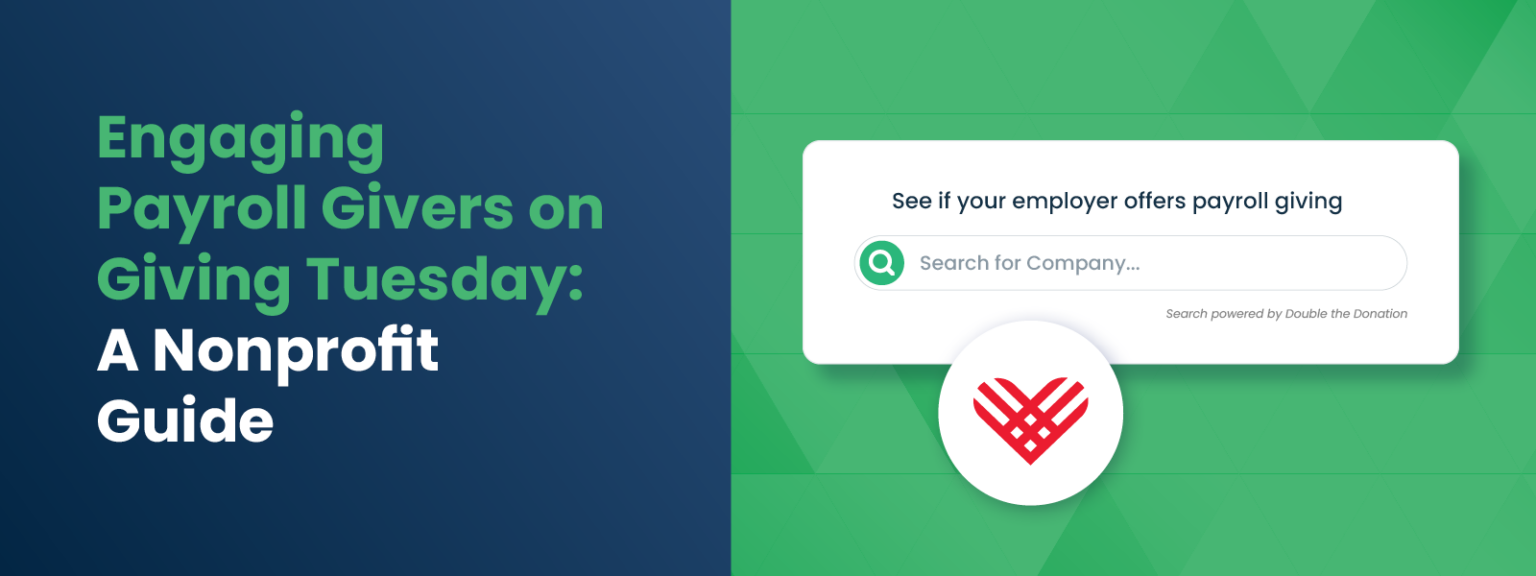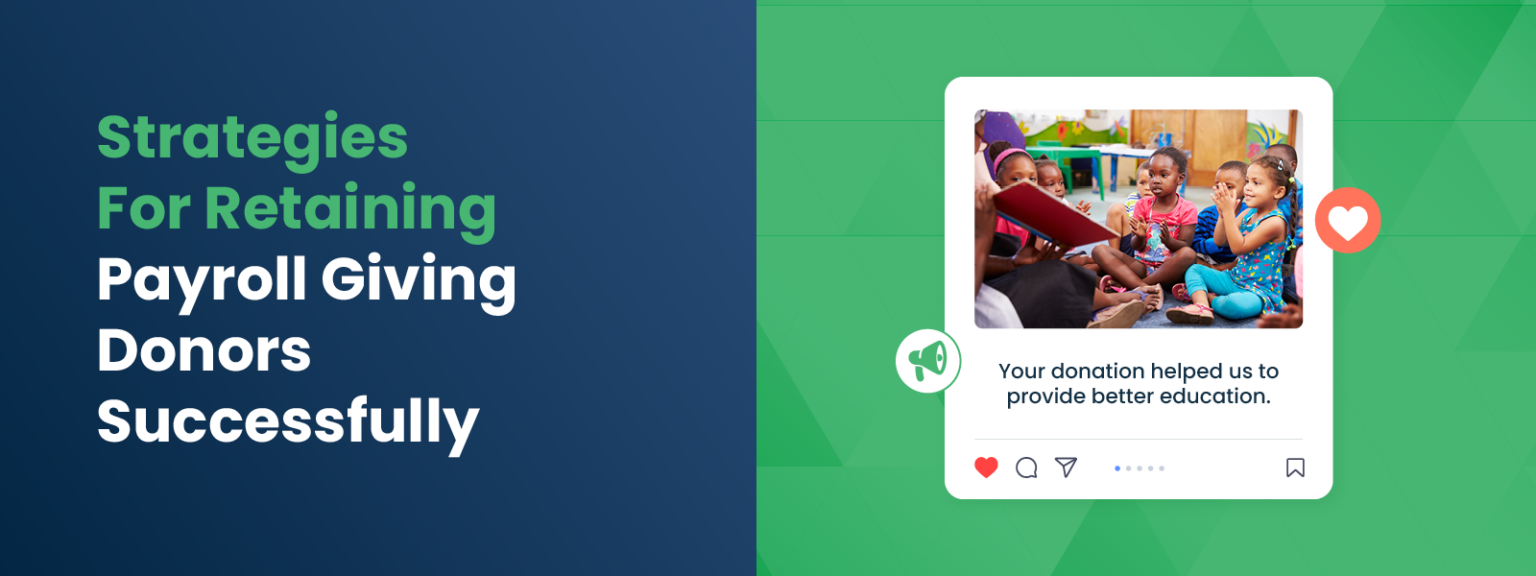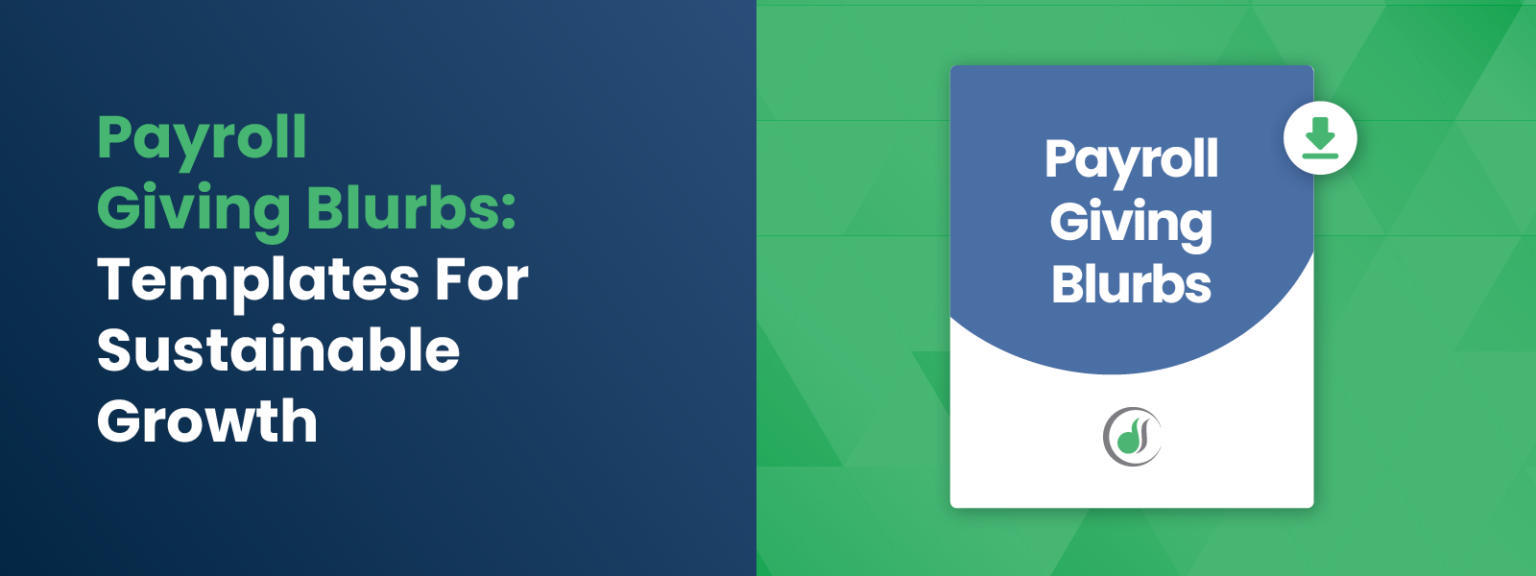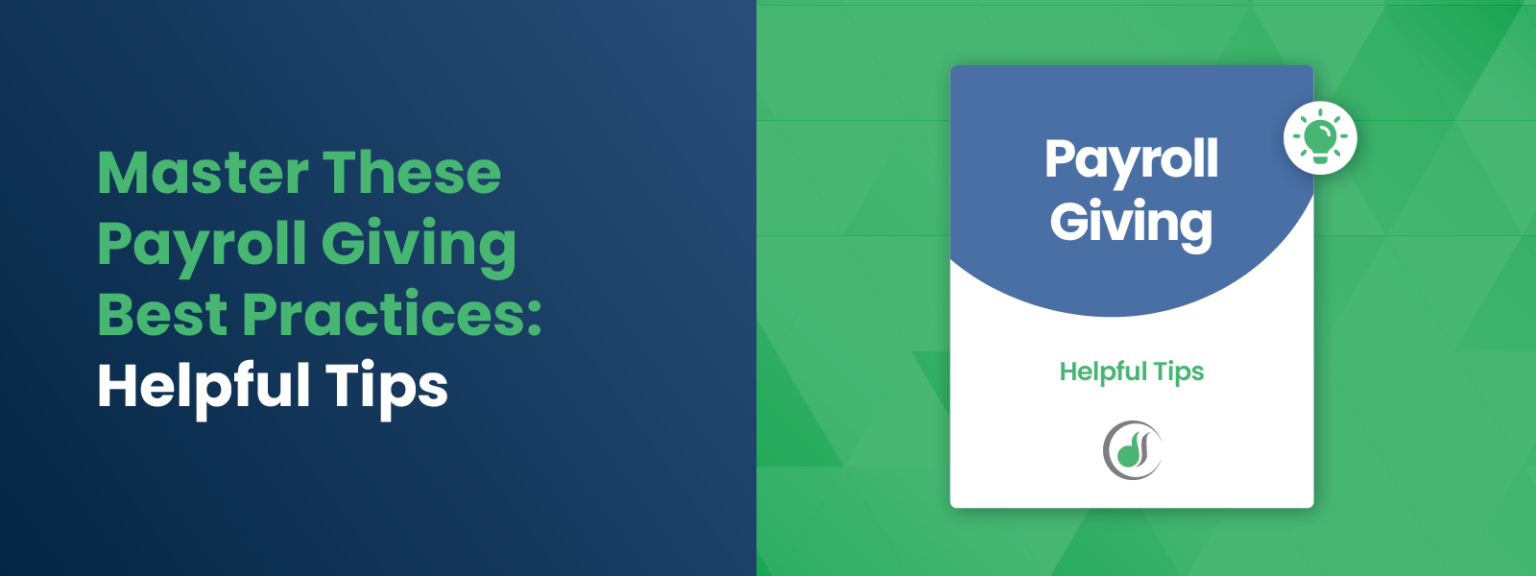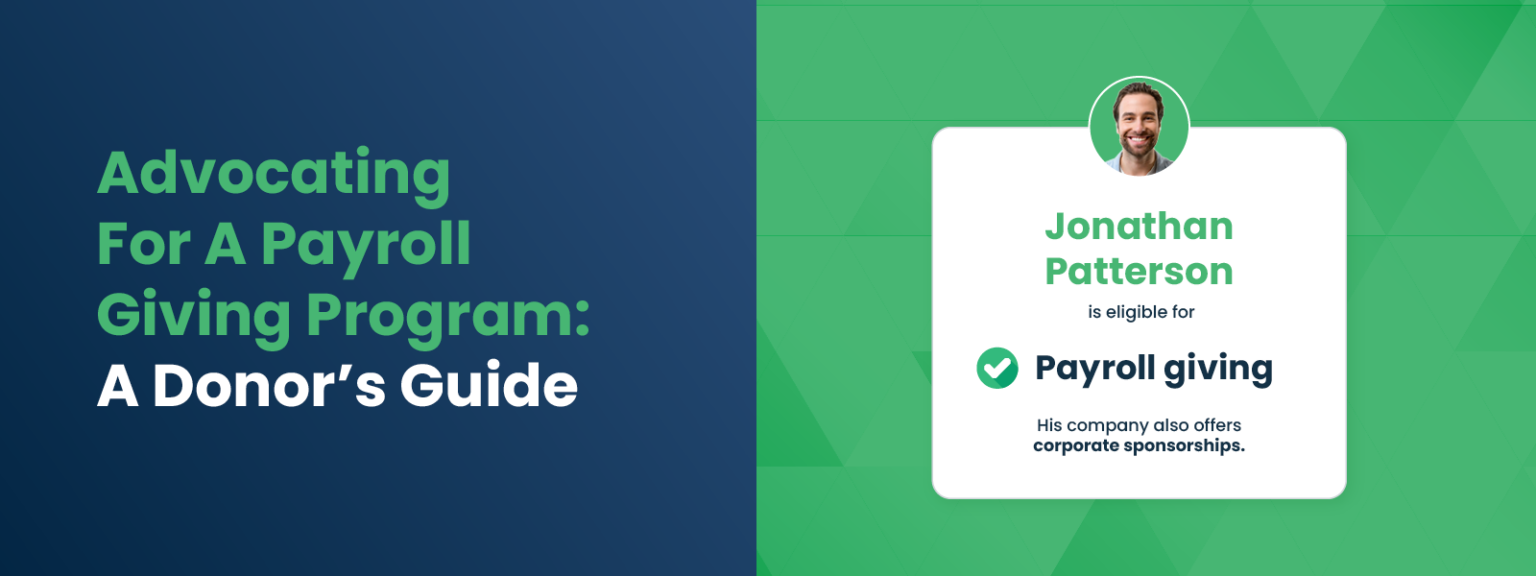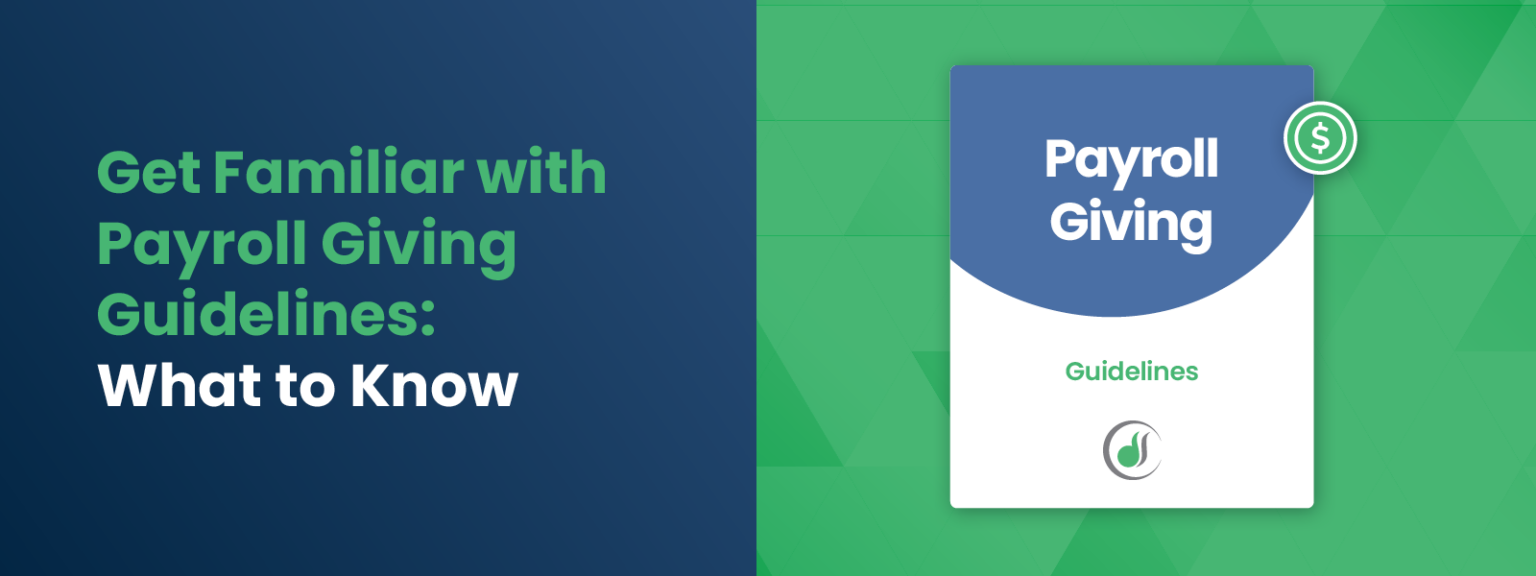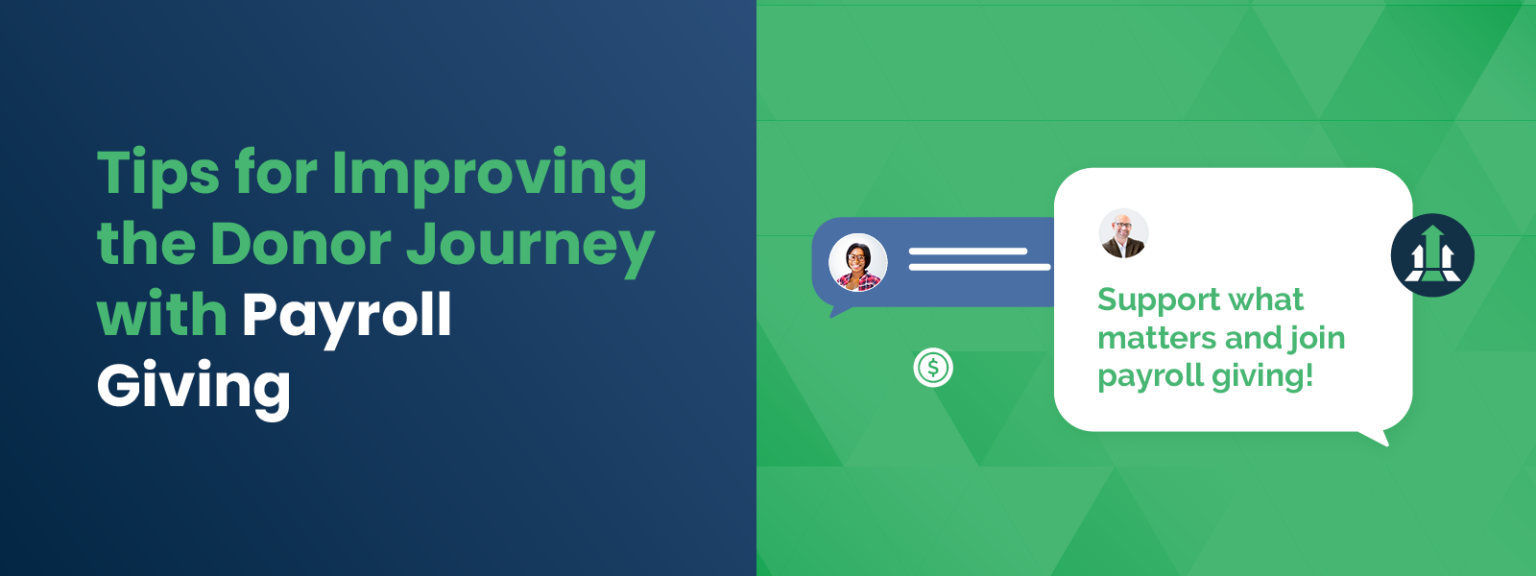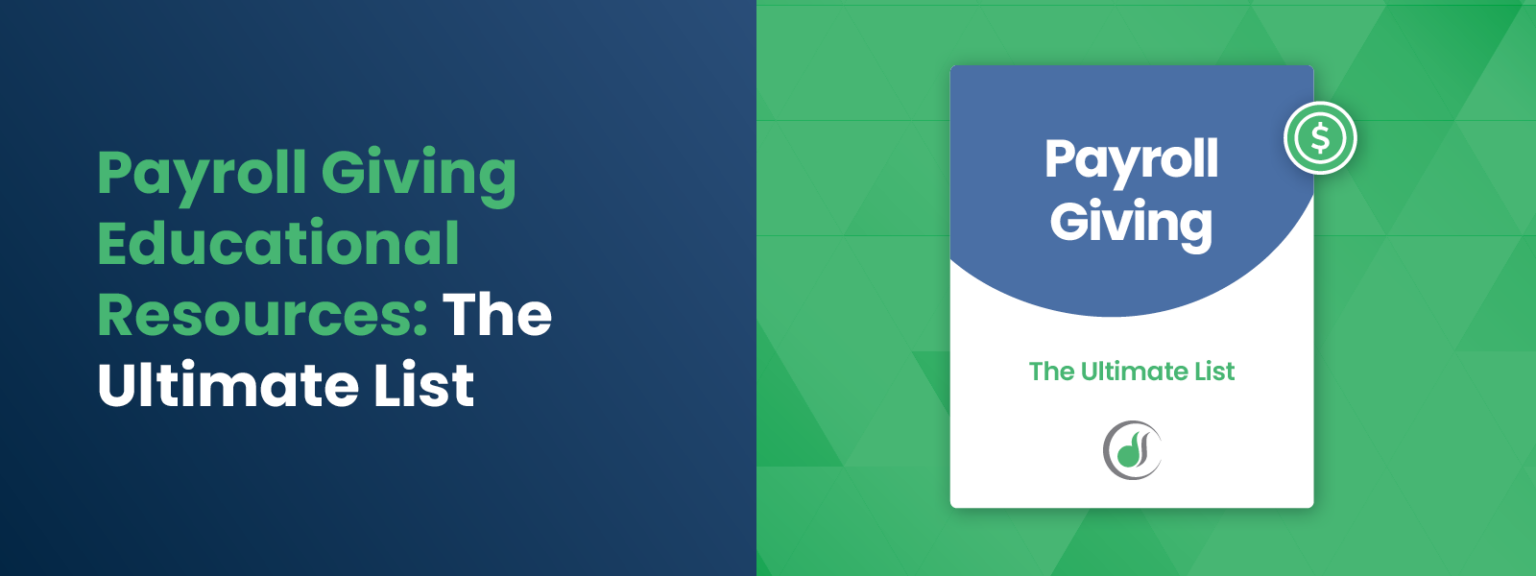Engaging Payroll Givers on Giving Tuesday: A Nonprofit Guide
Giving Tuesday is widely recognized as the single most powerful day in the philanthropic calendar. For twenty-four hours, the world turns its attention to generosity, resulting in a massive influx of donations, social media buzz, and volunteer sign-ups. For many nonprofits, this day provides a critical injection of cash that helps close out the annual budget. However, there is a hidden opportunity within this frenzy that often goes overlooked. While securing one-time cash gifts is essential, engaging payroll givers on Giving Tuesday can transform a single day of generosity into a sustainable year-round revenue stream.
The challenge with Giving Tuesday is often the “sugar crash” that follows the initial rush. Donors give once and then disengage until the next holiday season. By shifting your strategy to focus on payroll giving (a mechanism in which employees donate a portion of their paycheck to your nonprofit automatically), you can turn that momentary enthusiasm into a long-term commitment. Payroll giving is one of the most underutilized forms of corporate philanthropy, yet it offers unmatched retention rates and financial predictability.
In this guide, we’ll cover:
- The strategic advantage of promoting payroll giving during year-end campaigns
- Actionable strategies to convert one-time Giving Tuesday donors into payroll givers
- How to educate donors on the tax benefits and convenience of the program
- Templates for emails, social media, and website copy to drive enrollment
- Leveraging corporate matches to incentivize recurring sign-ups
- Best practices for stewarding these donors long after the holiday season ends
By implementing these strategies, you can use the visibility of Giving Tuesday not just to hit a daily fundraising goal, but to build a foundation of recurring revenue that supports your mission all year long.
The Strategic Value of Payroll Giving on Giving Tuesday
To effectively advocate for this funding stream, you must first understand why it is worth prioritizing during your busiest time of year. Payroll giving allows employees to donate to registered nonprofits directly from their salary, often on a pre-tax basis. This method transforms a donor’s relationship with your organization from transactional to relational.
- Predictable, Recurring Income: While Giving Tuesday donations are often sporadic one-time gifts, payroll giving ensures a steady cash flow. This predictability improves financial planning and program continuity, allowing your nonprofit to rely on a consistent baseline of support rather than crossing your fingers for a successful holiday campaign.
- Higher Donor Retention: One of the most compelling reasons to focus on engaging payroll givers on Giving Tuesday is retention. Payroll donors tend to donate longer than one-time or online givers. Because the deduction happens automatically and often pre-tax, the donor effectively “doesn’t miss” the money, making them less likely to cancel the recurring gift during belt-tightening periods.
- Lower Administrative Overhead: Processing thousands of individual credit card transactions on Giving Tuesday incurs significant fees and administrative work. In contrast, payroll donations are managed through platforms or employers, reducing time and costs for your team. This efficiency allows you to direct more of the raised funds toward your actual mission.
Did You Know? Payroll giving offers a unique “win-win-win” scenario. Nonprofits gain lower administrative overhead and sustainable income; donors enjoy tax-efficient, effortless giving; and employers boost their Corporate Social Responsibility (CSR) profile and employee engagement.
Strategy 1: The “Set It and Forget It” Pitch
Giving Tuesday falls during a chaotic time of year. Between holiday shopping, end-of-year work deadlines, and family obligations, donors are often looking for simplicity. You can leverage this desire for convenience to pitch payroll giving.
Positioning Automation as a Benefit: Market payroll giving as the ultimate time-saver. Explain that by setting up a payroll deduction now, they can support their favorite cause all year long without having to remember to write a check or enter credit card information again.
Key Message: “Make your Giving Tuesday impact last 365 days. Sign up for payroll giving today and support us automatically with every paycheck.”
The “Budget-Friendly” Angle: Small, regular deductions are easier for donors to manage than large one-off gifts. A donor might hesitate to give $250 on Giving Tuesday, but they might happily agree to a $10 deduction per paycheck. Over a year, that small deduction adds up to $260—a higher total value with less financial strain on the donor.
Strategy 2: Leveraging the Year-End Tax Incentive
Giving Tuesday is perfectly timed to capitalize on year-end tax planning. Donors are looking for ways to maximize their charitable deductions before December 31st.
Educating on Pre-Tax Benefits: Payroll donations are often deducted from the employee’s salary before tax is calculated. This means that a donation costs the employee less in real terms than a standard post-tax donation.
Example: A $100 donation might only reduce their take-home pay by $70 (depending on their tax bracket), yet the nonprofit receives the full $100.
The “Give More for Less” Message: Use this tax efficiency as a core part of your Giving Tuesday messaging. “Did you know you can give more to [Nonprofit Name] without it costing you more? Payroll giving allows you to donate pre-tax, amplifying your impact instantly”.
Strategy 3: The Corporate Match Multiplier
Giving Tuesday is synonymous with matching challenges. Many nonprofits secure a matching grant from a major donor for the day. You can apply this same excitement to payroll giving by highlighting corporate matching gift programs.
Double the Recurring Impact: Many companies match payroll gifts, doubling the value of contributions. This is a powerful incentive. If a donor signs up for a $20 monthly deduction, and their employer matches it, they are effectively generating $480 a year for your cause.
Promoting the “Double Match”: If you have a Giving Tuesday match secured, ask your sponsor if it can apply to the annualized value of new payroll sign-ups.
Pitch: “Sign up for payroll giving today! Our Giving Tuesday sponsor will match your first year of donations, AND your employer might match them too. That’s a triple impact!”
Quick Tip: Use a matching gift search tool on your dedicated Giving Tuesday landing page. This allows donors to instantly check if their employer offers payroll giving or matching gifts, removing the guesswork and driving immediate action.
Strategy 4: Streamlining the Enrollment Process
The biggest barrier to engaging payroll givers on Giving Tuesday is friction. If the process is confusing, donors will abandon it for a simple one-time credit card donation. You must make enrollment as seamless as possible.
- Provide Direct Links: Many companies manage their payroll giving through third-party platforms like Benevity, Blackbaud, or CyberGrants. Wherever possible, provide direct links to your organization’s profile within these portals.
- Create a “How-To” Guide: Create a simple, downloadable PDF or a dedicated web page that walks donors through the enrollment process for major local employers. List the steps clearly: Log in to your HR portal > Select “Charitable Giving” > Search for [Nonprofit Name] > Enter your deduction amount > Click Submit.
- Capture Data Upfront: Include an optional “Employer” field on your Giving Tuesday donation forms. This allows you to screen your donors using employer appends and identify those who work for companies with payroll giving programs. You can then send targeted follow-up emails with specific instructions for their company.
Templates for Giving Tuesday Outreach
To help you execute these strategies, here are ready-to-use templates designed to convert Giving Tuesday excitement into payroll giving enrollment.
Website Blurb: The Landing Page Hook
Header: Make Your Giving Tuesday Last All Year
Body: Thank you for visiting us this Giving Tuesday! You have the power to make a difference that lasts beyond today. By signing up for payroll giving, you can support our mission automatically with every paycheck. It is tax-efficient, budget-friendly, and often matched by employers.
Call to Action: Check if your employer offers payroll giving and sign up in minutes! [Insert Search Widget]
Email Template: The Morning Appeal
Subject: Don’t just give today; give forever (automatically!)
Body:
Dear [Donor Name],
Happy Giving Tuesday! Today, millions of people are coming together to support the causes they love. We are so grateful you are part of our community. This year, we are inviting you to make a different kind of gift. Instead of a one-time donation, consider signing up for payroll giving. It allows you to donate a small amount from each paycheck, providing us with the steady support we need to plan for the future.
Payroll giving is…
- Easy: No credit cards to update.
- Smart: Donations are often pre-tax.
- Powerful: Small gifts add up to massive impact.
Check your eligibility here: [Link to Double the Donation Search Tool]
Thank you for helping us build a sustainable future.
Social Media Post: The “Set and Forget”
“Happy #GivingTuesday! 💙 Want to support [Nonprofit Name] without having to remember to donate? Sign up for payroll giving! 💼 It’s the set-it-and-forget-it way to change the world. 🌍 Check if your company participates: [Link] #PayrollGiving #SustainableImpact”
Social Media Post: The Tax Tip
“Did you know payroll giving can lower your taxes? 📉 By donating directly from your paycheck, you often give pre-tax dollars, making your donation go further for you AND us. 💸 Make the smart move this #GivingTuesday. [Link] #TaxTips #CorporateGiving”
Best Practices for Retaining Payroll Givers
Once you have successfully engaged payroll givers on Giving Tuesday, the work isn’t over. You must steward these donors to ensure they remain enrolled.
- The “Invisible Donor” Acknowledgement: Because payroll deductions happen automatically, donors often forget they are giving. Combat this by sending a specialized welcome series immediately after they sign up. Acknowledge the unique nature of their gift and thank them for becoming a sustaining partner.
- Regular Impact Reporting: Since these donors don’t receive a monthly transaction receipt, you must proactively remind them of their impact. Send quarterly updates specifically for payroll donors. Show them exactly what their sustained support is achieving, such as “Your payroll gifts funded 500 meals this quarter”.
- Milestone Recognition: Recognize the longevity of their support. When a donor hits their one-year anniversary of payroll giving, celebrate it. “Happy Anniversary! You have been supporting us through your paycheck for one year. Thank you for sticking with us.” This recognition reinforces their decision and reduces churn.
Quick Tip: Implement a “Corporate Champion” program. Encourage your new payroll donors to share their Giving Tuesday decision with colleagues. Peer validation is a powerful tool for driving further enrollment within a specific company.
Wrapping Up & Next Steps
Engaging payroll givers on Giving Tuesday is a strategic move that pays dividends long after the holiday season ends. By shifting your focus from one-time transactions to recurring payroll deductions, you build a foundation of financial stability that allows your nonprofit to dream bigger and plan further ahead.
To get started, audit your Giving Tuesday campaign materials. Are you mentioning payroll giving? Do you have a search tool available for donors to check their eligibility? By integrating these messages and tools, you can turn the year’s biggest giving day into a catalyst for sustainable growth.
Ready to take your corporate fundraising to the next level? Request a demo with Double the Donation to see how our automation tools can help you identify eligible donors, promote payroll giving, and maximize your revenue with minimal effort.

